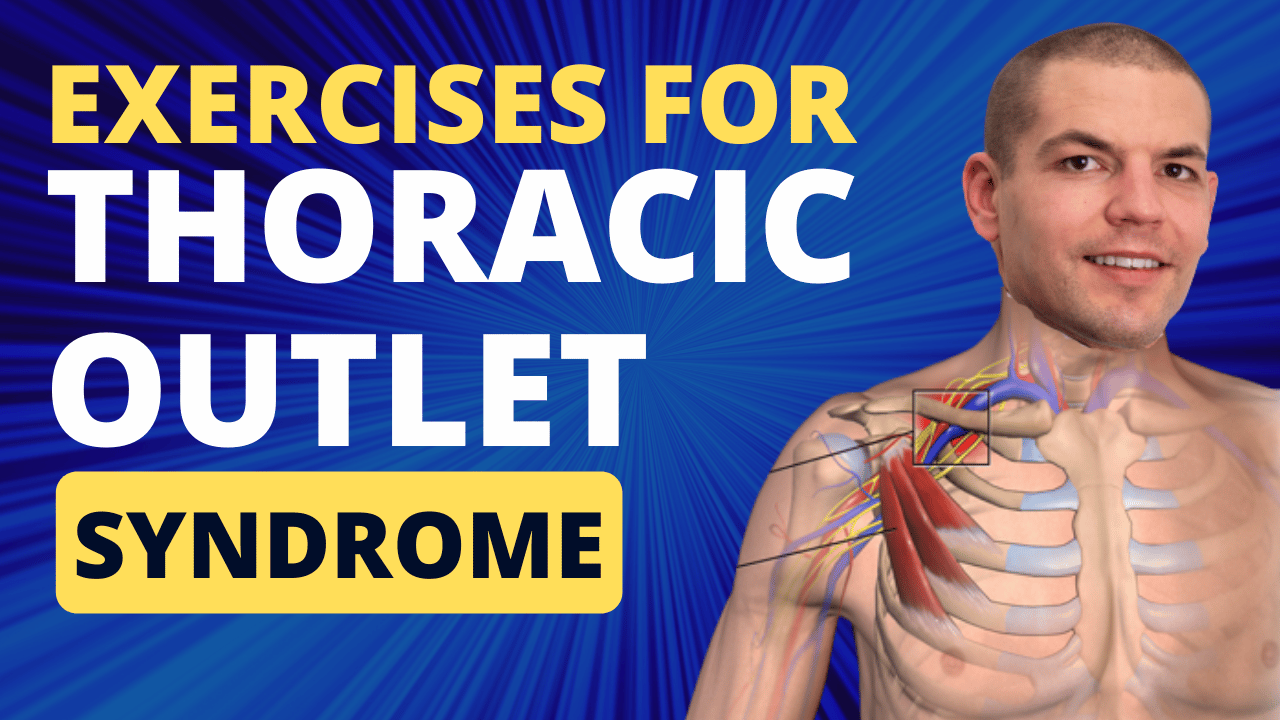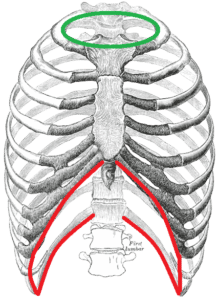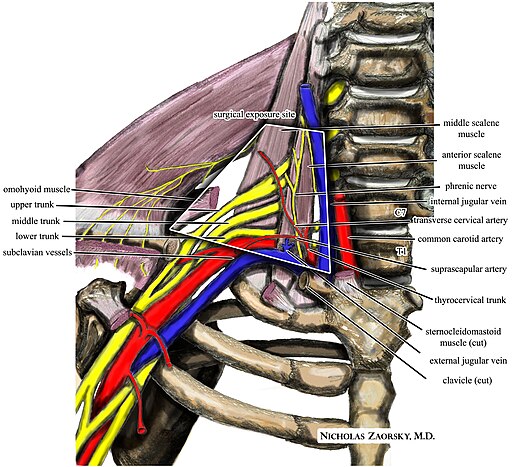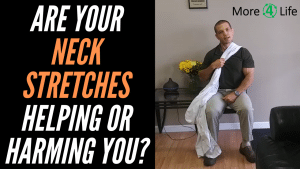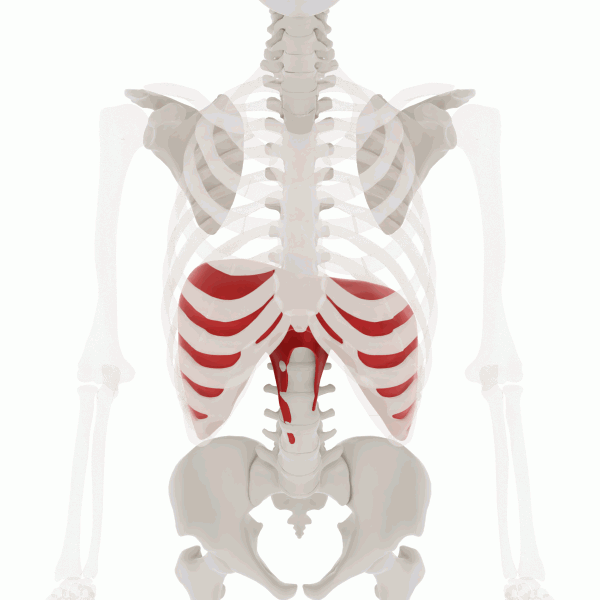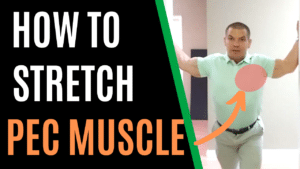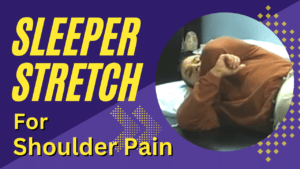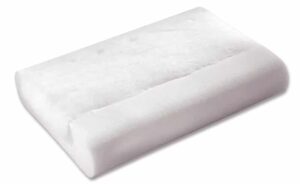Need Exercises For Thoracic Outlet Syndrome?
Finding the right kind of thoracic outlet syndrome treatment can be frustrating. Fortunately, the exercises for thoracic outlet syndrome in this video can help.
Watch the video to learn what causes thoracic syndrome and which exercises can help.

Finding The Right Exercises For Thoracic Outlet Syndrome Can Be Frustrating
Finding the right exercises for thoracic outlet syndrome can be extremely frustrating because not many doctors or physical therapists know how to manage it appropriately.
Back when I was working in a hospital-based physical therapy clinic with a lot of different physical therapists, when a diagnosis of thoracic outlet syndrome came in, nobody wanted to treat it.
Things like a rotator cuff injury or knee arthritis are fairly concrete. People generally understand what they are, and how to treat them. For example, there are a handful of exercises that help most types of knee pain.
But thoracic outlet syndrome is different because there's no standard set of exercises can be frustrating for patients and practitioners alike because thoracic outlet syndrome isn't just one thing.
It's a bunch of different things that kind of sort of have the same set of symptoms and we try to lump them all together.
But to really effectively treat thoracic outlet syndrome you have to break it down into its component parts and understand each of the things that contributes to the problem.
So that begs the question...
What's Thoracic Outlet Syndrome?
Truly, thoracic outlet syndrome is misnamed. The area involved in thoracic outlet syndrome is truly your thoracic inlet (green circle below).
The actual thoracic outlet (red) is the opening at the bottom of your ribcage, but thoracic outlet syndrome has to do with a compression of the nerves and blood vessels at the top of your ribcage.
There are 2 main types of thoracic outlet syndrome:
- Neurogenic Thoracic Outlet Syndrome - irritation of the nerves from your brachial plexus.
- Vascular Thoracic Outlet Syndrome - compression of the vessels at your thoracic inlet (top of the ribcage)
But everyone refers to a problem at the thoracic inlet as "thoracic outlet syndrome" - so that's the terminology that I'll use throughout this post.
Symptoms Of Thoracic Outlet Syndrome
Symptoms of neurogenic thoracic outlet syndrome affect the areas supplied by the brachial plexus.
In particular, the lower trunk of the brachial plexus is most involved.
Symptoms of neurogenic thoracic outlet syndrome may include:
- radiating pain in the arm and hand
- numbness and tingling mostly in the little finger and the ring finger
- weakness in the arm and hand
The other type of thoracic outlet syndrome, the vascular form, affects the subclavian arteries and veins that run between your first rib and your collarbone. (sub = beneath, clavian refers to clavicle = collarbone)
The subclavian artery is a main branch off of your aorta.
If the subclavian artery gets compressed between your first rib and your collarbone, it can create some serious issues.
Symptoms of vascular thoracic outlet include:
- weakness or coldness in your hand
- a bluish discoloration in the involved hand
What Causes Thoracic Outlet Syndrome?
As i mentioned before, in order to determine the right exercises for thoracic outlet syndrome, you first have to understand what causes thoracic outlet syndrome.
Spoiler alert: it's more then one thing.
Compression between the collarbone and first rib
If you're talking about vascular thoracic outlet syndrome, that's most commonly caused by either the collarbone being too low and being pulled down into the first rib.
For example, if you carry heavy things in one arm all day and it pulls your shoulder blade down and lowers your shoulder blade and collarbone on that side.
Since your subclavian artery and vein run underneath your collarbone, they can get compressed if you repeatedly carry heavy things in the same hand over time.
The other thing that can cause compression of your subclavian vessels is if your neck muscles in your neck are too tight, specifically your scalene muscles.
Your anteriror and middle scalene muscles attach to your first rib.
When your scalene muscles spasm, they can pull your first rib up toward your collarbone compression the subclavian vessels and the lower trunk of the brachial plexus. This can cause both vascular and neurogenic thoracic outlet syndrome.
Additionally, when the scalenes spasm, the brachial plexus can get compressed between the anterior and middle scalene causing neurogenic thoracic outlelt syndrome.
What Else Can Cause Thoracic Outlet Syndrome?
Pinched nerve in neck?
Because neurogenic thoracic outlet syndrome can cause numbness and tingling in your little finger and your ring finger, it can be mistaken for a pinched C8 nerve in your neck. It can be mistaken from ulnar nerve problem somewhere else such as at your elbow (cubital tunnel syndrome) or in your hand (Tunnel of Guyan).
So you do have to rule out the neck as a possible source of the pain. If you do have a pinched nerve in your neck, these exercises can help.
Stiff Chest Muscles
Once you've determined that your symptoms aren't coming from your neck, scalene muscles, or first rib, the next place to look would be your chest muscles.
Your subclavian artery and vein and branches of the brachial plexus run underneath your pectoralis minor muscle before entering the arm.
An Unstable Shoulder Joint
Finally, after passing under the pectoralis minor, your nerves and vessels pass in front of and underneath your shoulder joint.
If you have an unstable shoulder such as from a shoulder dislocation or a labral tear, this can be another site of compression.
Need Treatment For Thoracic Outlet Syndrome?
If you're a bit overwhelmed by the information above so far, don't feel bad. Thoracic outlet syndrome is complex and can be confusing.
If you'd like some help to find the right treatment for your thoracic outlet syndrome, tap the button below to request an appointment with one of our specialists.
Exercises For Thoracic Outlet Syndrome
Now that you know the variouls things that can cause thoracic outlet syndrome, we can discuss exercises to address each one of those problems.
Exercises For Thoracic Outlet Syndrome From Stiff Scalenes
If your brachial plexus is being compressed by the scalene muscles in your neck, then you want to stretch those muscles out so that they're not so stiff. .
However, if you just stretch your neck to the side like many people do, it might not help or could even make the problem worse.
If the scalene muscle are stiff, when you tip your head to the side, the stiffness in the scalenes can pull the first rib even farther up into the collarbone, and that's going to create more problems with your thoracic outlet syndrome.
So, you need to do something to hold first rib down putting a towel over your neck to help hold the first rib down.
Read our post about "Are Your Neck Stretches Helping Or Harming You?" for further details on how to do this exercise.
Diaphragmatic Breathing
Another common thing that people who have a elevated first rib and the stiff scalenes do is they tend to breathe with their neck.
Your scalenes are accessory breathing muscles. You use them to breath during times of stress or during a fight or flight reaction to allow maximum oxygen intake into your lungs.
However, at times of rest your scalenes should be pretty relaxed.
They're not supposed to be primary breathing muscles. You're supposed to breathe with your diaphragm which is a dome-shaped muscle at your "true" thoracic outlet.
Breathing with your diaphragm is the most efficient way to breathe. It helps manage stress and decrease pain, and it triggers your brain to release "happy" hormones (i.e. dopamine and serotonin).
Diaphragmatic breathing also helps relax your scalene muscles so that you're not compressing your brachial plexus.
To breath using your diaphragm, put one hand on your belly and one on your chest. As you breath in, you should feel the hand on your belly rise while the hand on your chest should stay relatively still.
Chest Muscle Stretches
Stiff chest muscles, particularly the pectoralis minor, can be a cause of thoracic outlet syndrome.
The pectoralis minor attaches to a hook of bone on the front of your shoulder blade, so when you sit with your shoulders rounded forward, that makes your chest muscles stiff.
In order to stretch the pectoralis minor, you need to tip the shoulders backward.
I have another post about how to stretch your pectoralis minor, so I'll refer you to that post for the actual stretching technique.
More importantly than stretching though is fixing the posture issue that caused your chest muscles to get stiff in the first place. If you don't do that, then no matter how much stretching you do, you're not going to overcome hours of poor posture everyday.
Learn about sitting posture to prevent neck and shoulder pain here.
Exercises For Shoulder Instability
Finally, what if you have an unstable shoulder that's causing your thoracic outlet syndrome?
When you bring your arm back as if throwing a ball, that's the most unstable position for the shoulder. In this position, the ball of your shoulder glides forward.
Your rotator cuff muscles need to be able to keep the ball of your shoulder centered in the socket as you raise your arm over your head or reach behind your back.
Learn should stabilization exercises in this video
Additionally, if the shoulder capsule or the muscles in the back of your shoulder are too stiff, they can cause the ball of your shoulder to glide forward excessively. This puts pressure on the nerves that pass in front of the shoulder.
In order to address this, stretching the muscles in the back of your shoulder by doing the sleeper stretch can help.
While we're on the topic of sleeping...
Your Sleeping Position Affects Thoracic Outlet Syndrome
Just as posture during the day affects thoracic outlet syndrome, the position of your neck and shoulders when sleeping at night also affects it.
If you sleep on your side, hug a pillow with your top arm to keep it well supported. In addition, make sure to use a pillow that supports your neck in midline. Doing so will ensure that your neck doesn't tip too far to the side.
Here is the pillow that we recommend to many of the patients in our office
The Pillo-Pedic Pillow has a 4-in-1 design offers different levels of height and firmness for all body types to support your neck in a midline position and allow you to sleep comfortably.
If you experience thoracic outlet syndrome symptoms in the morning, then using the right pillow may help you as well.
Exercises To Avoid With Thoracic Outlet Syndrome
Any exercises that put excessive downward pull on your shoulders or shoulder blades should be avoided with thoracic outlet syndrome.
Some exercise to avoid with thoracic outlet syndrome include:
- Heavy deadlifts
- Heavy shrugs
- Too much bench pressing
Thoracic Outlet Syndrome Surgery?
The surgical treatment for thoracic outlet syndrome is removing the first rib. This is often a painful surgery, but rarely is it necessary if thoracic outlet syndrome is treated correctly. Breast reduction surgery is sometimes also helpful for women whose bust size causes excessive downward pull on the shoulders.
However, in most cases, thoracic outlet syndrome surgery can be avoided with proper conservative treatment.
Conservative Treatment For Thoracic Outlet Syndrome
In addition to the exercises for thoracic outlet syndrome mentioned above, manual therapy physical therapy treatment can help.
Some of these manual physical therapy techniques include:
Need Treatment For Thoracic Outlet Syndrome?
If you'd like to discover out how our specialist physical therapists at More 4 Life can help you, tap the button below to request a Free Discovery Visit.

